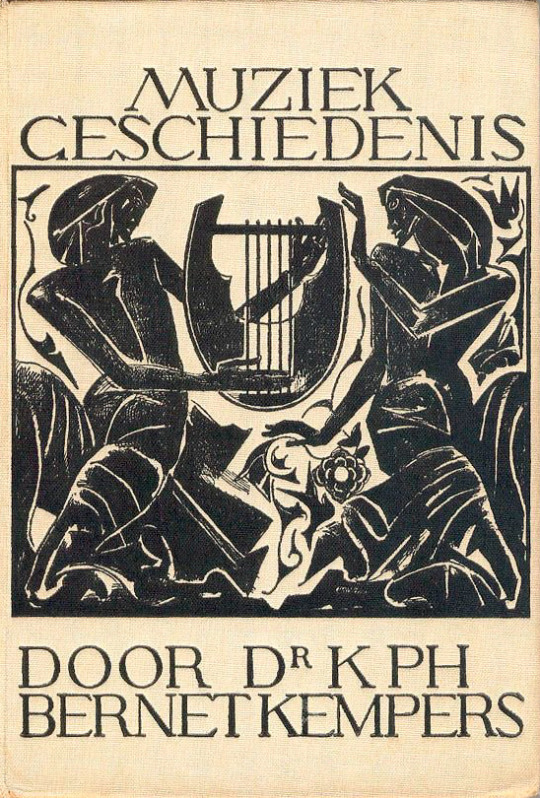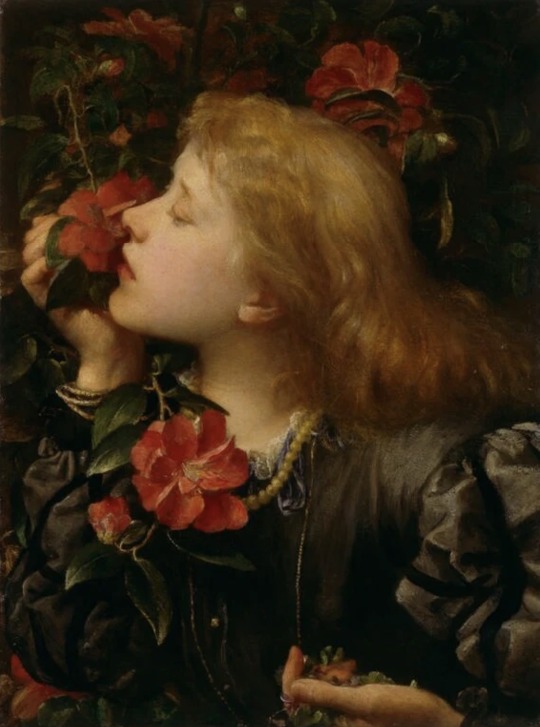#symbolist movement
Explore tagged Tumblr posts
Text

Life's Illusions
Artist: George Frederic Watts (British, 1817–1904
Date: 1840
Medium: Oil on canvas
Collection: TATE Britain
Description
Life's Illusions is an allegorical painting that explores the vanity of human desires. Watts believed that art should reveal the mystery of being, and he used universal symbols to represent life's emotions and aspirations.
#painting#allegorical art#life's illusions#oil on canvas#vanity of human desires#british art#symbolist movement#symbolism#oil painting#symbols#emotions#aspirations#male figures#female figures#george frederick watts#british painter#british culture#19th century art#artwork#european art#tate britain#19th century painting#pre raphaelite
47 notes
·
View notes
Text

Vase of Flowers
Artist: Odilon Redon (French, 1840–1916)
Date: c. 1905
Medium: Oil on fabric
Collection: Cleveland Museum of Art, Cleveland, Ohio, United States
Description
Rapturous flower still lifes like this dominated the last decade and a half of Odilon Redon’s career and provided his greatest commercial success. His interest in plants and flowers began in his youth; child of wine producers, he grew up northwest of Bordeaux and was sensitive to fluctuations in weather, light, and temperature affecting the grape harvest. When he was 20, Redon met Armond Clavaud, a botanist and draftsman who illustrated his own compendium of flowers of the Bordeaux region. Clavaud’s meticulously rendered drawings sparked the young Redon’s imagination and helped to instill his desire to paint “nature, as seen in a dream.”
#still life#painting#oil on fabric#vase of flowers#odilon redon#symbolist movement#french painter#color#oil painting#french art#20th century painting#artwork#european art#fabric
19 notes
·
View notes
Text

Britomartis
Artist: George Frederic Watts (British, 1817–1904)
Date: 1877-1878
Medium: Oil on canvas
Collection: Birmingham Museums Trust, London, United Kingdom
Description
Britomartis was a Greek goddess of mountains and hunting, who was primarily worshipped on the island of Crete. She was sometimes believed to be an oread, a mountain nymph, but she was often conflated or syncretized with Artemis and Aphaea, the "invisible" patroness of Aegina. She is also known as Dictynna or as a daughter of Dictynna.
In the 16th century, the naming of a character identified with English military prowess as "Britomart" in Edmund Spenser's knightly epic The Faerie Queene led to a number of appearances by "Britomart" figures in British art and literature.
#mythological art#george frederic watts#britomartis#greek goddess#greek mythology#british painter#european#19th century painting#britomart#woman#book#vase#flower#artwork#symbolist movement#british culture#painting#oil painting#fine art#fresco#open book#costume#drapery#potted plant#columns#european art#british art
18 notes
·
View notes
Note
do you like paintings? What’s your opinion on late 19th century early 20th century art?
I love paintings! In fact, I have a fine arts degree in illustration, so I hope I know something about art history. I am always learning though!
Right now, I am reading a book called Wagnerism: Art and Politics in the Shadow of Music which talks about how Western art was influenced by the works of Composer Richard Wagner. The author has brought up the Symbolist Movement, which I remember reading about back in school.
The Symbolists, were an art-for-art's-sake movement, where the paintings are supposed to invoke a kind of mythological story with the poetic symbols that are used. The movements at the time were very closely related to the artistic movements that sprung up with Western Esoteric movements like the Rosicrucians and The Theosophical Society, which I am kind of obsessed with studying, so I was glad to have it be discussed intellectually in this book!
(It's hard to find intellectual study on spiritual movements because a lot of the times you get people who believe in the movement and aren't scientifically detached from them)

(This one I think you will recognize!) Jupiter and Semele (1894–1895), by Gustave Moreau, Musée Gustave Moreau, Paris
The esoteric movements, evolved out of Europe being really isolated from the rest of the world while Europeans entered the Enlightenment Era. Europeans were obsessed with creating new mythologies for themselves after living in the dark ages for so long. This unfortunately meant that the esoteric movements have been stolen from Jewish Mysticism, Islamic Mysticism, Buddhism, Jainism, Hinduism, and other Eastern religions and spiritual practices. But of course, you get a lot of Greco/Roman mythology in there as well. These movements would use these paintings as a kind of alter piece, or spiritual place that one could go. This, of course is in sharp contrast to the many years of art and imagery being controlled by the Catholic Church. You can now view a painting as an intellectual in a salon, while also receiving a spiritual benefit from it outside of the Church's rule.
This was before the Psychologist Carl Jung was born, who would later compile his famous Red Book filled with illustrations and artistic self analysis through architypes and symbols.

(A snapshot from the Red Book) You can see Jung's symbols now above the industrialized world below. We are moving further into modernity people!
But I have pretty much only answered you about late 19th Century art and also have a lot to say about Early 20th Century art! Thank you for the ask! Sorry for any typos!
#art#art history#symbolist painting#symbolist art#symbolist movement#western esotericism#esoteric art#enlightenment#paintings#carl jung#red book#19th century#20th century
5 notes
·
View notes
Text


"I have always had in me something, I know not what, which made me do differently from others; and, with me, fidelity is perhaps no more than pride. Having only myself to rely upon, I have had to strengthen, to build up that self."
From a passage on Honore de Balzac from The Symbolist Movement in Literature
3 notes
·
View notes
Text

MUSIEK GESCHIEDENIS [aka MUSIC HISTORY] by Bernet Kempers.
Symbolism had a major impact of Dutch book art. The high point of symbolist painting was between 1890 and 1910, but Dutch book designers used the imagery until the 1930s.
#beautiful books#book blog#books books books#book cover#books#vintage books#book design#book publishing#music#symbolist movement
9 notes
·
View notes
Text

Ellen Terry ('Choosing')
by George Frederic Watts
oil on strawboard mounted on Gatorfoam, 1864
#george frederic watts#british art#symbolist art#symbolist movement#london#poetry#art#literature#light academia#aesthetic
1 note
·
View note
Text

Maximilian Lenz (1860-1948) "A Song of Spring" (1913) Symbolism
#paintings#art#artwork#allegorical painting#spring#maximilian lenz#symbolism#symbolist art#symbolism movement#austrian artist#white dress#dresses#female portrait#portrait of a woman#green#tree#1910s#early 1900s#early 20th century#a queue work of art
594 notes
·
View notes
Text

Félicien Rops (1833–1898) - L’Amour crucifié (Crucified Love)
#félicien rops#l’amour crucifié#crucified love#19th century art#symbolist art#esoteric art#art#oil painting#painting#decadent movement
2K notes
·
View notes
Text

text prompt: gustav klimt is cleaning his pool
25 notes
·
View notes
Text

What lies behind you and what lies in front of you, pales in comparison to what lies inside of you...!!
- Ralph Waldo Emerson..!!
#Image: Reminiscing by the Pond (1893) oil on canvas by French Symbolist movement painter#engraver and designer Armand Point (1860-1932).]
10 notes
·
View notes
Text

Faith
Artist: George Frederic Watts (British, 1817–1904)
Date: c. 1890-1896
Medium: Oil paint on canvas
Collection: TATE Britain, United Kingdom
#painting#symbolist movement#oil on canvas#artwork#fine art#faith#human figure#clouds#british culture#british painter#george frederic watts#british symbolist painter#symbolism#costume#tate britain#european art#19th century painting#sword#female figure
8 notes
·
View notes
Text

The Last King by Alfred Kubin (1902)
#art#alfred kubin#been doing some research about the symbolist movement#found this piece that has the vibes
1 note
·
View note
Note
oooh, may I please ask which book of John McKirdy Duncan you ended up getting??
I have 'The Paintings of John Duncan: A Scottish Symbolist' by John Kemplay! It's the only book I've found so far that is dedicated to his art. There was at least one other book I read that featured him amongst other artists, but if I remember correctly it was in black and white.
#if anyone has other recs for books that feature his work (or work from the symbolist and celtic revival movements) I'd love to know!#ask
1 note
·
View note
Text



George Frederic Watts, 1817-1904
Clytie, ca.1868/75, painted plaster, 86.4 cm
The Met Fifth Avenue Inv. 08.131
A Victorian painter and sculptor associated with the Symbolist movement, George Frederic Watts used art to communicate “ideas, not things.” In this sculpture, he conveys the torment of desire by representing the mythological ocean nymph Clytie as she is metamorphosed into a sunflower at the command of the sun god Apollo, object of her unrequited affection. Petals sensuously envelop her body, while her twisting head follows the sun on its course. Watts painted the plaster to warm her flesh. This is said to be the original plaster model. (MET)
109 notes
·
View notes
Text
tonally it was pretty similar to in stars and time so if you enjoyed that you'll probably like detective beebo. although i will say i found beebo's use of the timelooping mechanic a little more well balanced? idk the puzzles flowed better for me.
if you like isafrin you will like this game. there's romance. i'm a hater and tbh the thief/detective trope honestly didn't feel like it fit in with the overall themes of the game but whatever. they're fine.
marigold and nina were cool i wish they'd been a little more toxic. timelooping in general was handled well. haunted house stuff felt a little derivative? but that's not the end of the world. i think it did enough of its own legwork to justify some kitty horror show anatomy beats lmao.
played through all of detective beebo tonight (all ten endings babyyyy) and it was pretty good. i think it suffered pretty heavily from inconsistent theming and therapy-speak but the story was really interesting on a conceptual level and a lot of the game design was really good. the puzzles were consistently engaging without being frustrating and i think the decision to not open up every room in every route did a lot for keeping everything on track. i really appreciated that.
a lot of the character dynamics felt trope-y and overly "tumblrized" and i think a lot of potentially impactful moments suffered from that. angel and beebo's relationship did not even begin to compel me. coli drama in general was better but still shot itself in the foot with overly articulate characterization at times.
the story was at is best when it was letting its mechanics tell the story. beebo's previous experience with a haunted house was really well done. the framing captured the dread and horror really nicely. the ost was fitting, and i liked the presence of diegetic music. it added a lot to the atmosphere.
overall i'm a sucker for timeloops and detectives so basically i was a goner from the beginning. i do think it could have used a little more polish in terms of dialogue and maybe sprite design (i get that it's pixel art but some of the art was a little too abstract imo) but it's definitely worth checking out at least. especially because it's free. yayyyy its beebo !
#ohoho... what a charming little game#good break from my. uh.#russian symbolist movement exploration. god.#read the rose and the cross earlier today at work and it fucking gutted me. so i needed something silly and fun .#which beebo was ^_^ very fun and fluffy would recommend.
5 notes
·
View notes